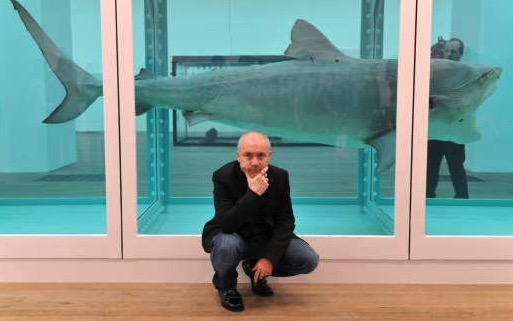
I’ve been making a film about Marcel Duchamp. But it keeps making me think of Damien Hirst. It’s annoying.
The film is for a series called The Art Mysteries in which I unravel the complex meanings of celebrated artworks. In this case I’m looking at Duchamp’s Fountain, the upturned urinal that’s been voted “the most influential artwork of the 20th century”. Fountain is viewed as the first masterpiece of conceptual art. Duchamp is widely celebrated as “the father of conceptual art”. Quite a reputation.
What’s this got to do with Hirst? Well, Fountain was a “readymade”. The urinal was bought in a New York hardware store, but by turning it on its side and signing and dating it “R. Mutt 1917” Duchamp turned it into something new: a piece of conceptual art. He submitted it to a New York exhibition, but it was never shown. Instead, it was shoved behind a screen and lost. “The most influential artwork of the 20th century” ceased to exist. And that’s where Hirst comes in.
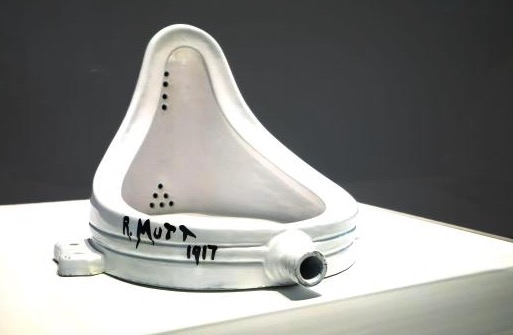
A couple of months ago a storm erupted in the newspapers about some pieces Hirst had shown in Hong Kong in an exhibition devoted to his Natural History series. These are the works that made him famous: dead animals suspended in formaldehyde. The most notorious of them, made in 1991, featured a shark lurking in a glass box. Hirst called it The Physical Impossibility of Death in the Mind of Someone Living. Everyone else called it The Shark.
The Shark had such a huge impact that it single-handedly altered the relationship between contemporary art and the public. I was there. I saw it happen. One minute contemporary art was on p39 of the newspaper. The next minute it was front-page news. A tectonic shift had been engineered in our national taste. Without The Shark, Tate Modern would never have existed. Britain would never have become a country that queued around the block to see the Turner prize.
Anyway, in the show in Hong Kong there were several works that had been made recently in Hirst’s studio, but which carried an earlier date. They seemed to belong to the Natural History moment, but were newer. Cue an attack of apoplexy in the press. How dare Hirst fiddle with his timescales. Off with his head.
The artist explained that he had the idea for the works in the 1990s, but made them only recently. And since they were works of conceptual art, the idea was what counted. More angry snapping of teeth. An artwork is an artwork. When you make it is what counts. Naughty Damien has been shabbily back-dating.
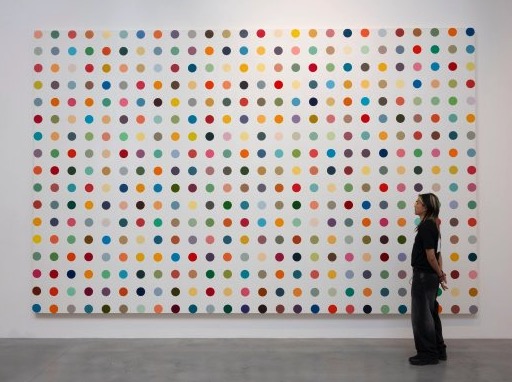
Hmmm. To get back to Duchamp and Fountain, no one knows what happened to “the most influential artwork of the 20th century”. It disappeared soon after it was “made”, probably thrown away. Yet there I was filming it recently in Tate Modern, and again in a big Duchamp exhibition in Seoul. In front of me was the urinal turned on its side, signed and dated “R. Mutt 1917”.
It was actually a remake, approved by Duchamp, produced in the 1960s. Duchamp approved 16 of them, each now worth a king’s ransom. Without these replicas, “the most influential artwork of the 20th century” would not, could not, have had its impact.
No one takes a pop at Duchamp for falsely dating his most celebrated work. The father of conceptual art has a divine status in the art world. In his case, conceptual art is understood as conceptual art.
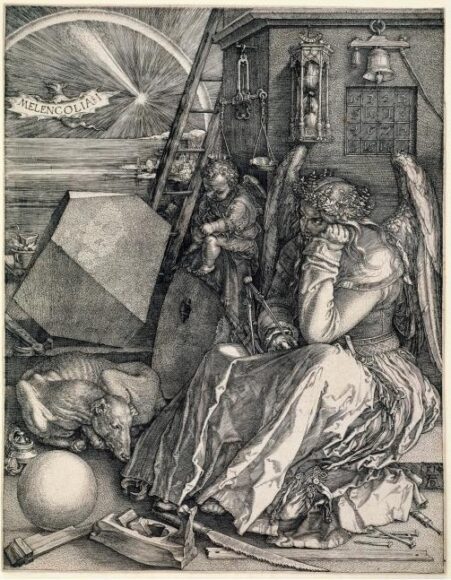
The fact is that artists have always produced versions of their most successful works. Another of the films I’m making is about the world’s most celebrated engraving, Melencolia I by Albrecht Dürer. Melencolia was made in 1514. It’s firmly dated at the bottom. But most of the examples that survive today were printed later, after Dürer’s death. That does not stop them being examples of Melencolia I. Nor does it change the date stamped prominently on them: 1514.
Leonardo da Vinci made two versions of The Virgin of the Rocks. One is in the Louvre, the other in the National Gallery. Art historians argue about which came first but no one accuses Leonardo of underhandedness because he made a later version of his own success.
The snide reaction to Hirst’s repetition of his formaldehyde animals tells us more about ourselves than it does about him. It speaks of a society that values commercial truths above aesthetic ones: that no longer sees the art for the dollar signs. No one jumps on Yves Saint Laurent for not stitching every inch of his own couture. No one expects Mozart to play all the instruments in his orchestra. But the thought of Hirst employing a busy studio to make the things he imagines and conceives has us raging.

Another bout of fury is erupting about the new show at Hirst’s gallery in Newport Street, curated by his son Connor. “Nepo art”, the shout goes up. The accusation this time is that Connor Hirst has profited from having Damien Hirst as his dad, and that curating a show at Newport Street constitutes jumping the queue.
Of course Hirst has helped his son. It’s what dads do. No one complains that Artemisia Gentileschi received her early art training and guidance from her father, Orazio. Another film I’m making is about The Garden of Earthly Delights by Hieronymus Bosch. Bosch’s father was a painter. So was his grandfather. Most of the “Bosch” paintings that fill our galleries were painted by the family studio, not by Hieronymus himself. That’s how art travels down the generations.
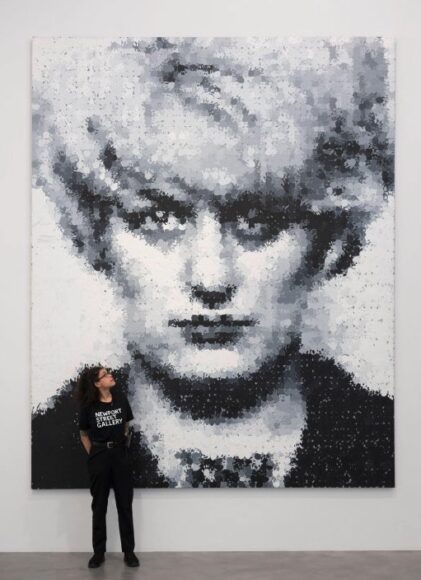
Connor Hirst’s show is really rather good. Featuring 80 works from his dad’s collection, it has a couple of cracking Francis Bacons in it, and a particularly fine selection of things by the YBAs. Including the giant portrait of Myra Hindley that caused such a fuss in the Sensation exhibition.
Connor Hirst has done well. So let’s put our national snideness aside for once and congratulate him on it. Bravo, Connor Hirst. Now for heaven’s sake, yank your dad away from the NFTs and the ghastly digital “drops” he’s been churning out recently, and get him making important art again.
Dominion, curated by Connor Hirst, is at the Newport Street Gallery, London SE11, until Sep 1